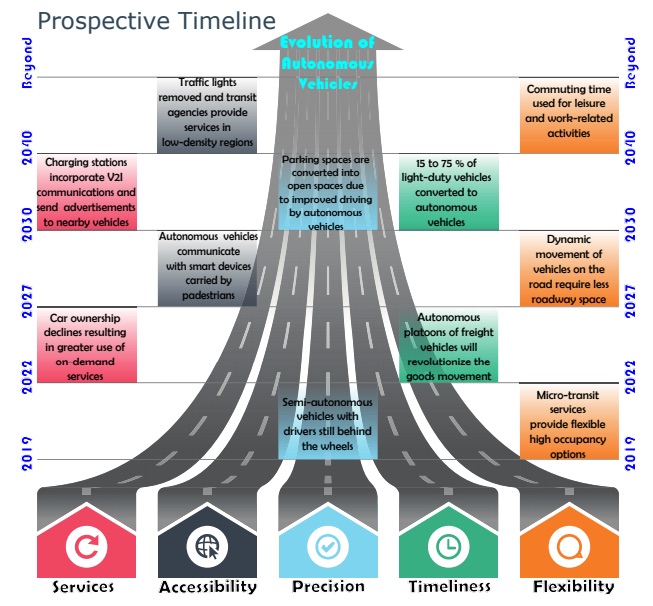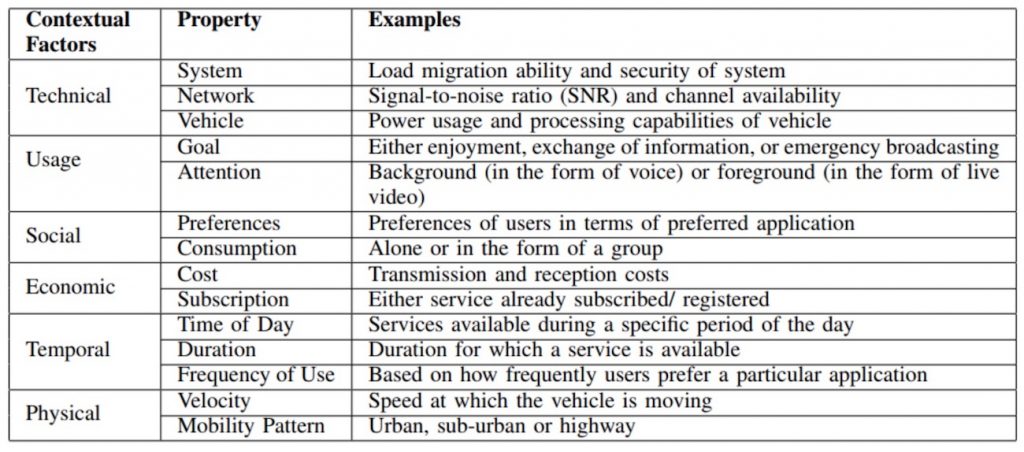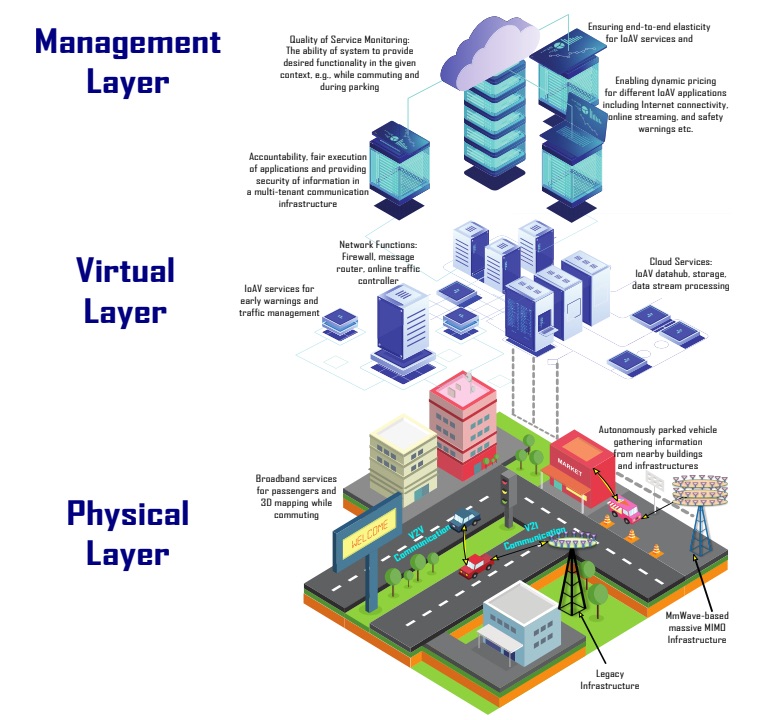Almost nothing will happen without some form of movement. Mobility is one of the non-negotiables in urban life. Therefore it is understandable why huge efforts are dedicated to improving the way we move in the city.
In the paper, “Internet of Autonomous Vehicles: Architecture, Features, and Socio-Technological Challenges,” a new paradigm called the Internet of Autonomous Vehicles (IoAV) is introduced.
What is IoAV?
An IoAV architecture is built upon the assumption that the future will be a world where autonomous vehicles dominate the roads. This is a sound assumption since we have cars like those manufactured by Tesla which can self-operate way back in 2016. Self-driving cars are the future of urban mobility.
An IoAV system will be a network of sensors not limited to absorbing information from the environment. It will be able to exchange information with other vehicles as well. Some advantages this would offer include:
- Enhanced tracking of the behavior of objects and people.
- Real-time awareness of the physical environment.
- High data flow due to the connectivity of devices and vehicles.
- Low dependence on humans in decision making and analyzing data resulting from deeper analysis capabilities.
- Optimization of the transportation system, with automated vehicles having a wider range of control.
- Lower resource consumption, Thanks to the available data in the IoAV network, vehicles can optimize the use of resources.

Key Features
The authors of the same paper identify four key features which set IoAV apart from the mobility technologies we have today:
From our partners:
01. Organization
Vehicles will take care of the maintenance and operations that humans would normally have to deal with. With IoAV, vehicles can adjust when changes such as the following are detected:
- Software failures
- Change in communication components
- Variations in environmental conditions
- Malicious activity
02. Configuration
With IoAV, vehicles will be able to configure themselves to comply with the policies of traffic control authorities in a particular area. It will also be capable of seamless integration with any third-party components added to it.
03. Optimization
IoAV will enable the vehicles to learn to optimize its performance by using collected information on the following contextual factors:

04. Protection
Both the hardware and the software will be independently protected by the vehicles. This involves:
- Predicting possible failures,
- Detecting potential threats
- Mitigating effects, in the case of system failures
The IoAV architecture
The IoAV architecture proposed in the paper can be divided into three layers: physical, virtual, and management.

Challenges
The convenience that will be provided by IoAV can only be attained if we successfully address the following social challenges:
- Establishing a clear legal and financial model to disperse the responsibilities among the stakeholders of IoAV
- Establishing the boundaries of public and private information, given how the system heavily relies on data.
- Motivating cooperation among vehicles, since this is the best way to improve IoAV.
Apart from this, there are some technical challenges that must be tackled as well:
- Hardware impairments
- Incapability of existing cellular networks to support IoAV
- Lack of energy management solutions. This is heavily needed since IoAV components will be resource-constrained.
Radical changes demand equivalently massive efforts to be fully actualized. We’re definitely far from attaining this future offered by IoAV. However, recognizing how we’re going to build it and what kind of challenges we are going to face along the way is a huge step forward.













